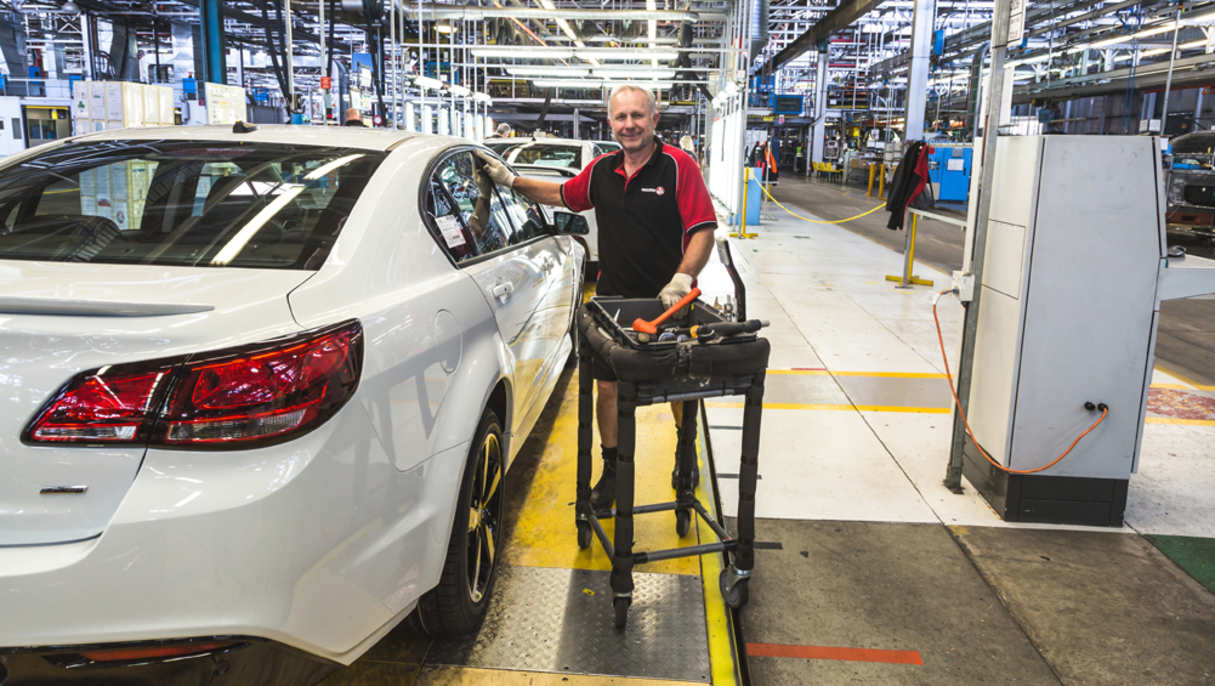The final examples of the home-grown Commodore sedan, Sportwagon and ute, and Caprice will roll off Holden’s production line in Elizabeth, South Australia, this week, with the quartet to be kept by the carmaker as part of a historic car collection featured in the proposed Holden Heritage Centre.
Holden could potentially build two heritage centres, one in Victoria and the other in South Australia, as a homage to the two states where the Red Lion made most of its vehicles. However, the company is still yet to decide.
For Victoria, Fishermens Bend, Holden’s head office and the site its first all-Australian car was built in 1948, and the brand's Lang Lang proving ground are among the contenders.
Alternatively, South Australia's Elizabeth factory, where Australian car manufacturing ends on October 20, is another possible location. In the interim, a temporary heritage centre is being built at the site outside Adelaide while negotiations continue.
.jpg)
Aside from the last cars it keeps for itself, Holden will also give one of the final Commodores to the Australian National Museum in Canberra and has organised a display of vehicles in a manufacturing simulation at the National Motor Museum in Birdwood, South Australia.
As previously reported, three limited-edition Commodores – dubbed Motorsport, Director and Magnum – from the final batch are being auctioned for charity at Elizabeth tomorrow.
GM Holden communications director Sean Poppitt said that Holden would continue to honour its heritage, despite the company's exit from Australian manufacturing on Friday.
According to Mr Poppitt, Holden's history dates back to 1856, further than any other carmaker, excluding Peugeot which began in 1810 as a bicycle and coffee machine manufacturer.
He said Holden has been through five stages, first as a saddle-maker, then as a carriage manufacturer, then as a car body builder, before changing to armaments during World War II, and then to manufacturing and developing its own all-Australian cars since 1948.
Mr Poppitt added that following its exit from local manufacturing in six days' time, Holden will start a sixth stage as a sales and marketing enterprise, while still maintaining a strong design and engineering presence in Australia.

The brand's extensive collection of historic production and concept cars is currently scattered across the country, with some on display at its Melbourne head office, while others are on loan to museums or in storage.
Highlights from the concept collection include the famous Hurricane sports coupe, Torana GTR-X sports coupe and the eye-catching, retro-styled Efijy.
Mr Poppitt said that until Holden makes a decision on the proposed heritage centre, the last production cars reserved for the brand's collection would be located at the Elizabeth factory where the decommissioning process could stretch beyond 18 months.
A small museum in the Elizabeth factory's administration building, which is not open to the general public, has also been built to house several historic items, including marketing materials and production equipment, until a permanent home is decided.
Holden will farewell Elizabeth, a location where the company has been building cars for nearly 60 years, this weekend with a parade of up to 1500 vehicles owned by customers, fans and employees driving through the city streets, past the factory and to a local football ground where a show-and-shine event will take place.
While people gather in Elizabeth to honour Holden’s past, its future – the imported, Insignia-based Commodore – will be on display this weekend at the Motorclassica show in Melbourne.





.jpg)


.jpg)
.jpg)
.jpg)

.jpg)

.jpg)
_0.jpg)




.jpg)
.jpg)

.jpg)

.jpg)


.jpg)
